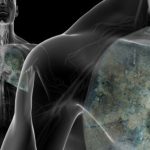 Last year I wrote about a fascinating project undertaken by researchers at UCLA to use machine learning in the identification of cancer cells. The method, which was documented in a recent study, takes a different stance to the current labeling approach that can fall down due to inaccuracy.
Last year I wrote about a fascinating project undertaken by researchers at UCLA to use machine learning in the identification of cancer cells. The method, which was documented in a recent study, takes a different stance to the current labeling approach that can fall down due to inaccuracy.
Instead, the new method captures an image of the cells without harming them. It’s capable of detecting 16 different physical characteristics, such as its biomass, granularity and size.
They aren’t the only team utilizing AI to more efficiently identify cancer cells however. A partnership has formed between the University of Warwick, Intel Corporation, the Alan Turing Institute and University Hospitals Coventry & Warwickshire NHS Trust (UHCW) to automatically examine medical images to identify tumors and immune cells in human tissue samples.
Spotting cancer
“The collaboration will enable us to benefit from world-class computer science expertise at Intel with the aim of optimising our digital pathology image analysis software pipeline and deploying some of the latest cutting-edge technologies developed in our lab for computer-assisted diagnosis and grading of cancer,” the team say.
The project hopes to increase both the accuracy and reliability of analysis of cancerous tissue specimens. It’s a process that clinicians have long known can be improved by better use of computers, but the partnership provides a clear pathway to achieve this.
“With this collaboration, we finally see a pathway toward bringing this science into practice. The successful adoption of these tools will stimulate better organisation of services, gains in efficiency, and above all, better care for patients, especially those with cancer,” the team say.
Lung cancer
The team will initially focus their efforts on lung cancer, with researchers from Intel and the University of Warwick working on a model to help computers recognize distinctions in cells that are associated with various types of lung cancer automatically.
To assist in this effort, UHCW are annotating digital pathology images from their library to help train the model. The eventual aim is for the model to be self-sufficient and capable of identifying cancerous cells not just for lung cancer but for many different forms of the disease.
Image analysis of this kind is one of the most promising early applications of machine learning in healthcare, and it’s one that the Turing Institute hope to support more of.
“This project is an excellent example of data science’s potential to underpin critical improvements in health and well-being, an area of great importance to the Alan Turing Institute,” they say.
The project builds on earlier work to digitize X-rays, and showcases the potential when these images can be combined with data from other sources to create truly groundbreaking discoveries. It’s a crucial point on the way to more personalized and precise medicine, and with fellow tech heavyweights such as Google and IBM also undertaking similar work, it’s a fascinating area to follow.